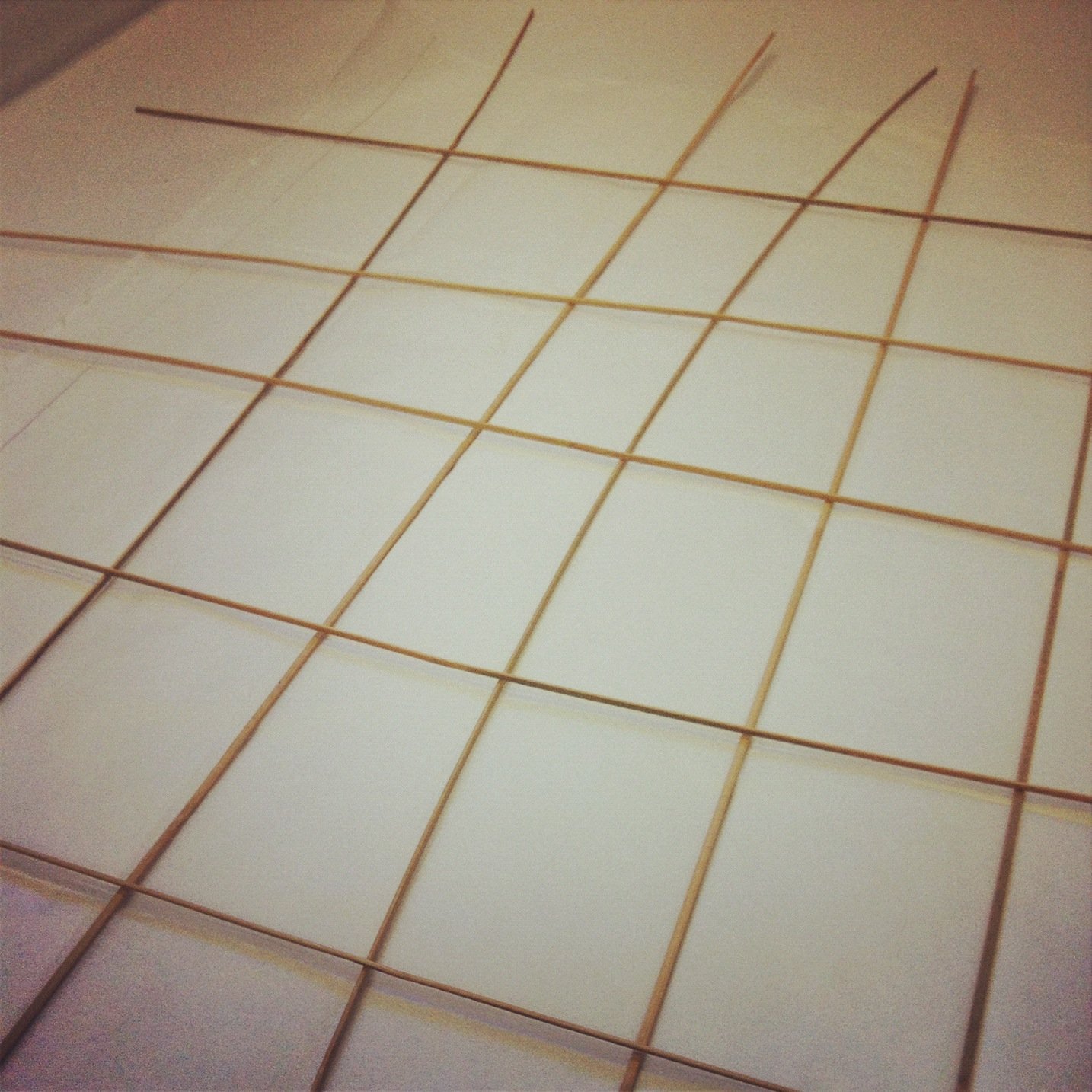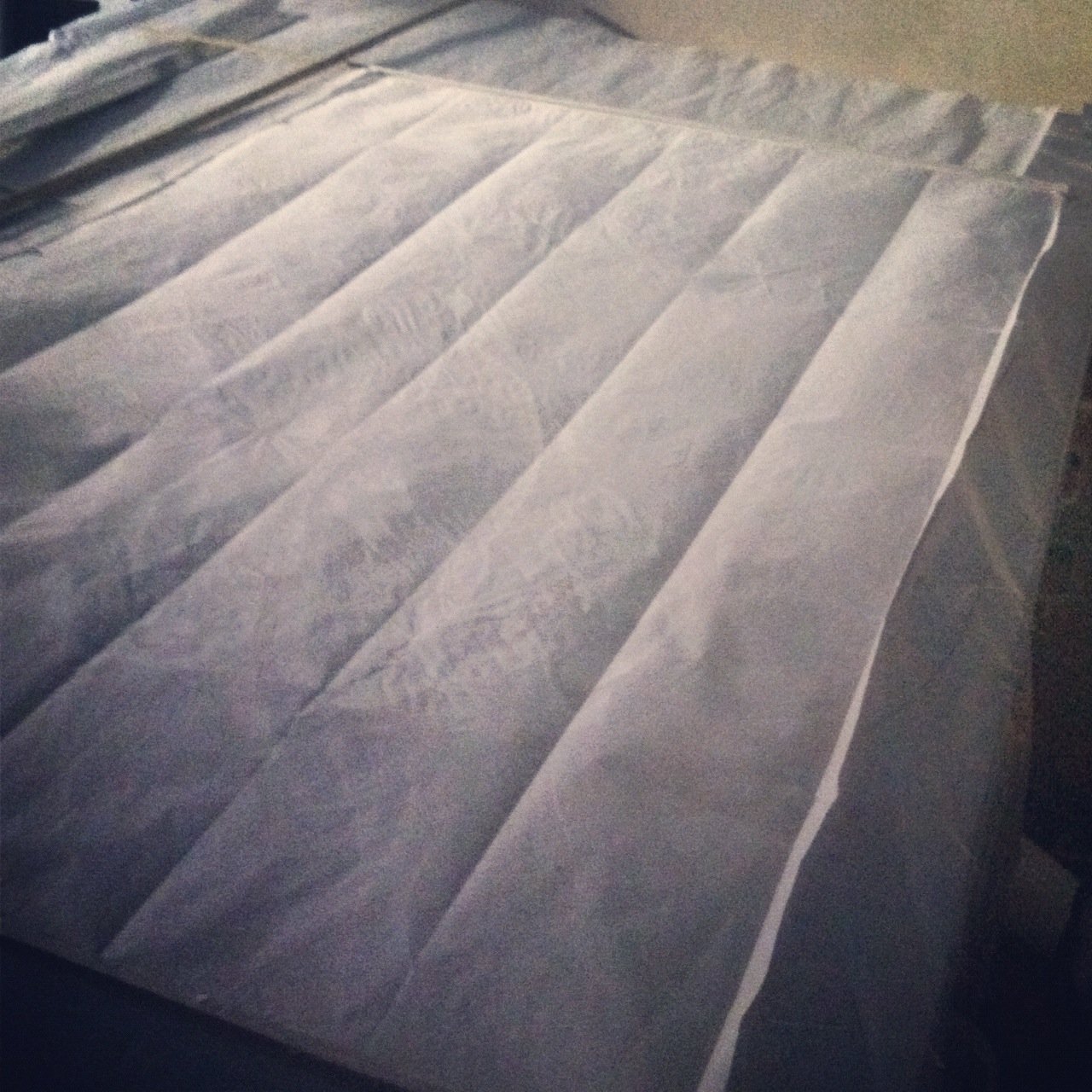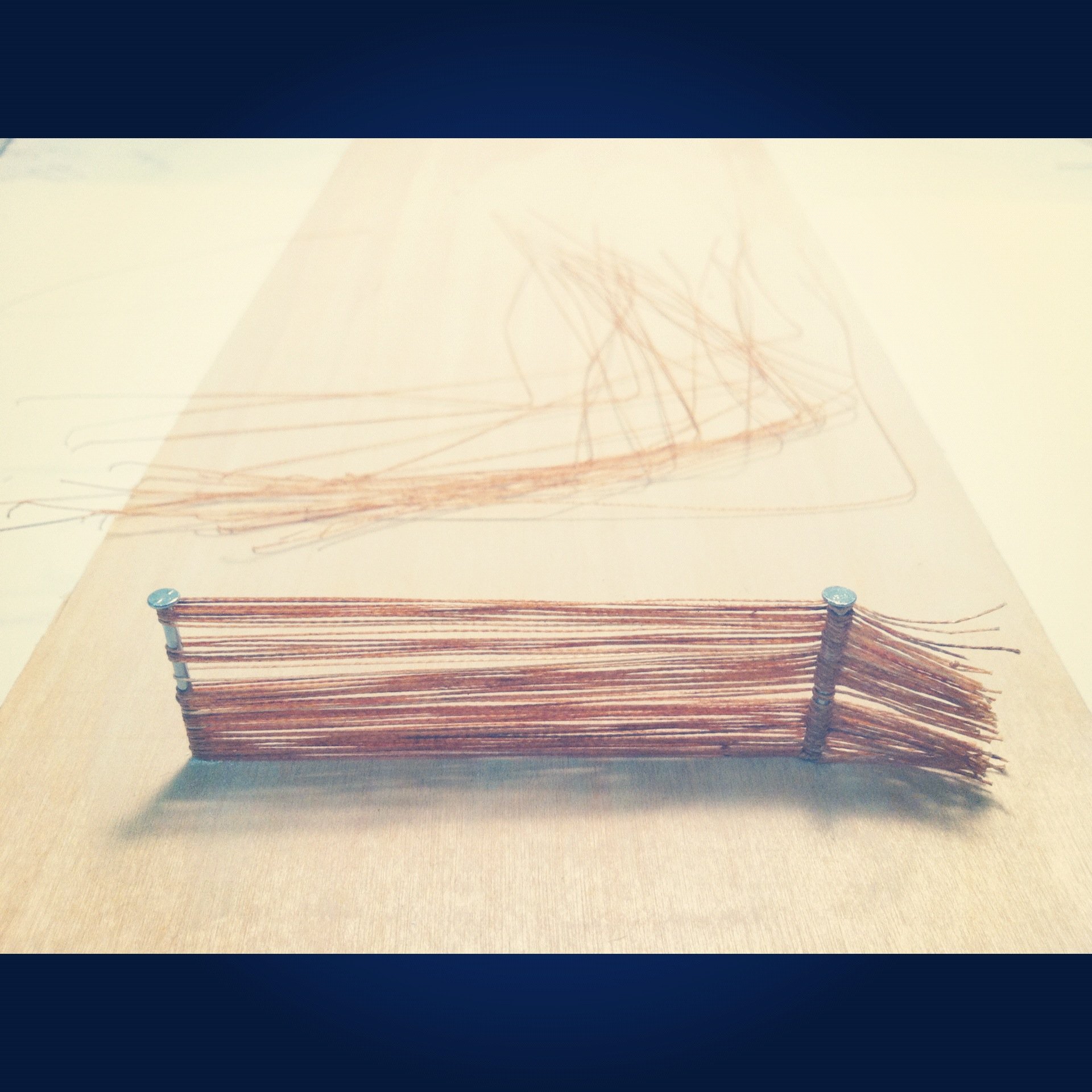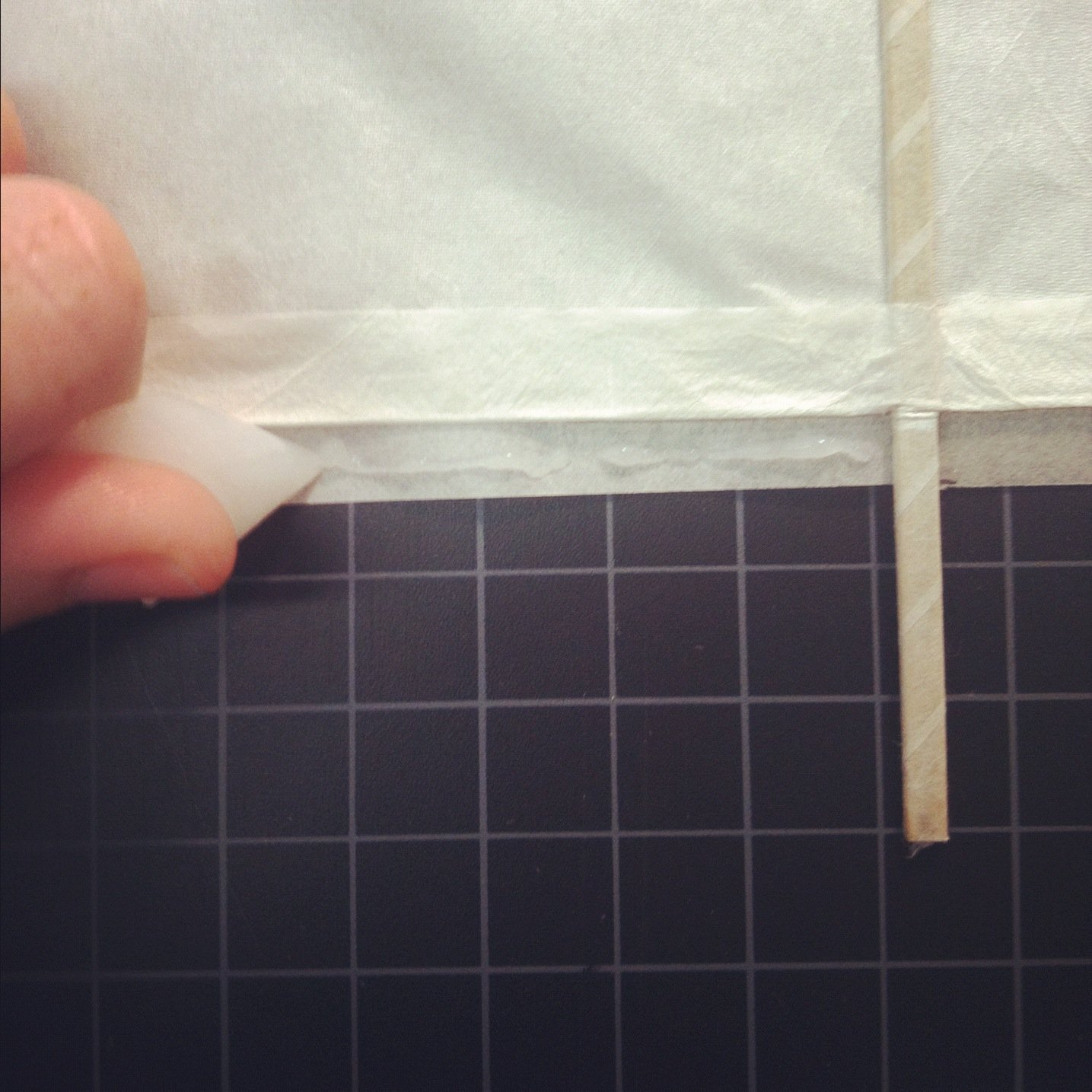Surveying the Landscape
Surveying the Landscape
(Edo kite in response to the Fukushima Daiichi nuclear disaster)
gampi, silk, bamboo, spectra, gouache, and rice glue
36" x 24"
2012
The Fukushima Daiichi nuclear disaster of Japan in March of 2011 had a staggering impact on the air, land, and people of the area. In the weeks after the initial impact the world beyond staggered with it. Today, drones are sent to areas too toxic for humans to visit in order measure radiation levels and mutations of flora and fauna of the the area are monitored. One such bioindicator is the pale blue grass butterfly (Zizeeria maha) which has been studied for over a decade and was considered a bioindicator candidate for environmental shifts even before the disaster. A study* published August of 2012 indicated the younger generations of this species are showing increased mutations of eyes, antennae, legs, as well as wings formations and patterns. One of the specimens is depicted on a Japanese cultural icon, an Edo style kite. The multitude of lines that tether the kite to land fittingly references the matrix of capillary tubes in capillary electrophorosis analysis, a process used in sequencing DNA. The white painting of the malformed butterfly is best seen as a dark shadow when flown in the sky as the sun illuminates it from behind. As with the image, the long term effects of radiation can be seen best when scientific study shines a light to examine it.
*Hiyama, A. et al. The biological impacts of the Fukushima nuclear accident on the pale grass blue butterfly. Sci. Rep. 2, 570 (2012).
This kite was supported by a materials and fabrication grant from the University of Florida for Codified II, an art exhibit of work inspired by genetics. Many thanks to the School of Art and Art History and the Genetics department. The work also received Best in Show.































